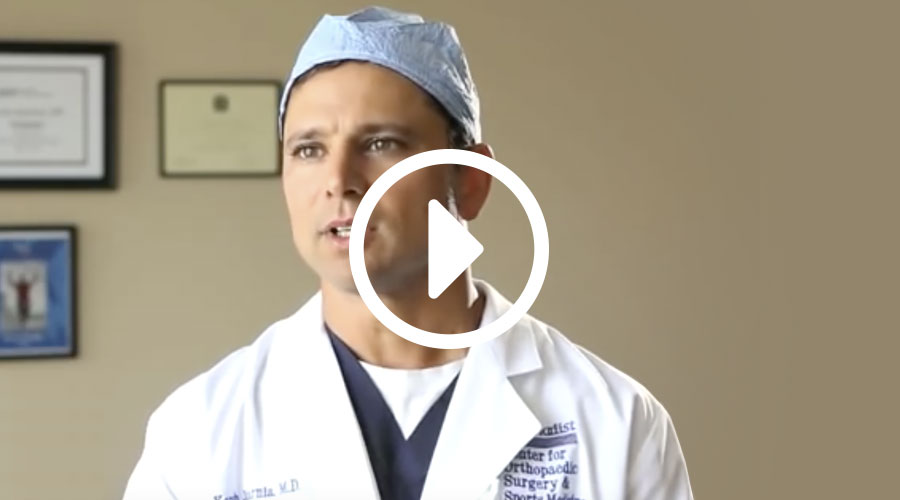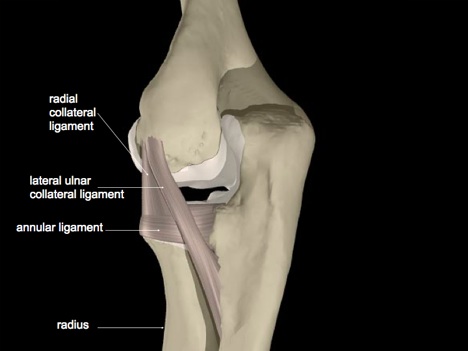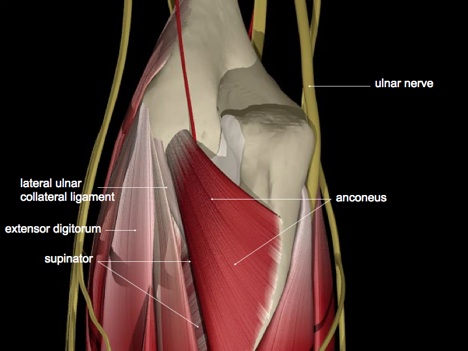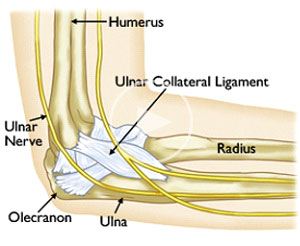Tennis Elbow, also known as lateral epicondylitis, is a common overuse condition affecting the muscles and tendons of the forearm, where they attach at the outside (lateral) of the elbow. While nearly 50 percent of tennis players will eventually experience Tennis Elbow, many of those diagnosed with Tennis Elbow have never played tennis. The condition is the result of strain placed on these muscles and tendons with repetitive activity or movement.
Read MoreELBOW/FOREARM: Injuries & Conditions
Tennis Elbow
Golfer’s Elbow
Golfer’s Elbow is a common overuse condition similar to Tennis Elbow though affects the muscles and tendons on the inside (medial) portion of the elbow and forearm. A repeated activity placing strain on the elbow, such as golfing, irritates and inflames these tendons and muscles. This inflammation can cause pain on the inside of the elbow, as well as in the forearm and wrist.
Read MoreElbow Fractures
There are many different types of Elbow Fractures, but among the most common affects the bony portion at the outside of the elbow known as the Olecranon. Referred to as Olecranon Fractures, these types of elbow fractures generally occur as the result of a direct impact from a fall or blow to the elbow. It may also be the result of a fall on an outstretched, straightened arm – causing the triceps muscle to pull the olecranon off the ulna. Another elbow fracture often associated with a fall or trauma is a radial head fracture, which requires surgical repair when displaced and severely comminuted (fragmented).
Read MoreElbow Ligament Injuries
Elbow Ligament Injuries are common overuse injuries frequently seen in athletes. Among the most common injuries affecting this area include Ulnar Collateral Ligament (UCL) Injuries and Medial Collateral Ligament (MCL) Injuries. UCL Injuries are most often seen in overhead and throwing sports such as volleyball, baseball, and swimming. MCL injuries are seen often in pitchers who frequently throw at a high rate of speed. Read more about UCL Injuries and MCL Injuries.
Read MoreElbow Arthritis
Arthritis of the elbow is generally diagnosed as osteoarthritis of the elbow and may be the result of an earlier fracture or dislocation. It may also be the result of joint degeneration that naturally occurs with age or from rheumatoid arthritis. Osteoarthritis results when the cartilage surface of the elbow is damaged and the joint begins to deteriorate.
Read MoreTommy John Injury
Often beginning with Little Leaguer’s Elbow, a condition affecting young pitchers who do not allow adequate rest between pitches, a baseball player’s elbow joint absorbs a tremendous amount of repetitive stress over the seasons. The impact of this type of overhead throwing irritates the tendons and ligaments supporting the elbow joint, predisposing pitchers to more serious problems. One such injury is an Ulnar Collateral Ligament (UCL) injury. This type of injury is also commonly called a Tommy John Injury.
Once seen primarily in adult athletes, the dramatic increase in more serious overuse injuries like UCL damage, Flexor Tendinitis and Valgus Extension Overload (VEO) in young players prompted the American Sports Medicine Institute (ASMI) and the USA Baseball, Little League Baseball and Major League Baseball organizations to establish Pitch Count Guidelines.
While these changes and educational efforts are expected to reduce the number of overuse injuries seen in young players, competitive league players remain at risk.
Read MoreUlnar Collateral Ligament (UCL) Injury
The ulnar collateral ligament (UCL) is among the most commonly injured ligament in throwing athletes. To accommodate the high speed throwing motions, the ligament stretches and lengthens until it can no longer hold the elbow bones tightly enough. Severity of the injury can range from a sprain with minor damage and inflammation to a complete tear.
- Pain on the inside of the elbow
- A feeling of instability in the elbow
- Loss of strength in throwing
- Irritation of the ulnar nerve (funny bone) causing numbness in the small and ring fingers
Diagnosis and Treatment
A UCL injury is diagnosed based on the results of a physical examination, X-ray and MRI. Depending on the severity of the damage, rest and refrain from play along with rehabilitative exercises and anti-inflammatory medication may be indicated. Work with an athletic trainer may also be helpful, to assess throwing mechanics and improve body positioning which can reduce excessive stress on the elbow.
If there is a complete tear of the ligament and patients fail to improve with conservative treatment, surgery may be indicated. Read about UCL Reconstruction, also known as Tommy John Surgery.
Read More





